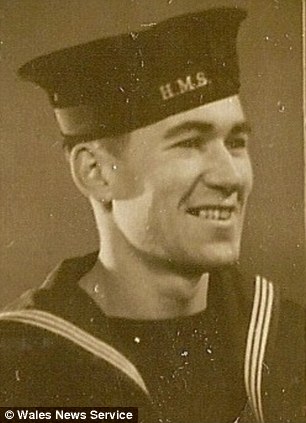Visitors who want to learn about the WWII seaman, can scan the barcode and will be directed to a website containing information about his service in the Arctic Convoys. Merchant Seaman Charles Davies died last year, aged 91. His son, Mr Joe Davis, used QR code technology to install the barcode on his father’s gravestone.
Now anyone who uses a smartphone or tablet, can be directed to the memorial page on the Forever Missed website. Davies took part in the Arctic Convoys and many other missions and he also survived the PQ17 ‘journey to hell’.
Joe Davis come up with the idea to put the barcode on his father’s final resting place after using the same method to give people more information about plants and trees in parks. He wanted visitors to know the incredible life story of his father, the Mail Online reports.
Charles James Davies was born in 1921, near Pontypridd in South Wales and he had 6 siblings. He survived some of the most dangerous days of World War Two, being constantly hunted by German U-boats. The website includes information and links to other pages and guides about the Arctic Convoys, certificates of proficiency and videos from the man’s funeral. According to Joe Davis, any kind of information can be encrypted into the QR barcode. ‘The more dense the code is, the more information you can cram into it,” he said.
He admitted on not having the best relationship with his father until he was in his early 20s, saying that is when they became best friends. He told what an influence war years had on the man’s personality and his way of being as a person.
At first, QR barcodes were used to track cars during the manufacturing process but recently they have been more often used for marketing and advertising, making it possible for smartphone and tablet users to download information on different products, places and people.
The Arctic Convoys started in 1941 and ended in 1945. The North Atlantic Fleet was assigned with cruising from the UK to Murmansk and Archangel ports in Russia, to aid Russian Allies. Many of the sea man who took part in the Arctic Convoys, called them ‘The Suicide Missions’.
Ships carrying supplies and ammunition were sailed to the North Russian ports, escorted by British Royal Naval ships and plane carriers. As the German U-boats tried to stop the supplies, a big number of ships were lost and more than 3,000 seaman were killed in action.
Between 1941 and 1945, Russia was supplied with 7,411 aircraft, 4,932 anti-tank guns and 5,218 tanks.
